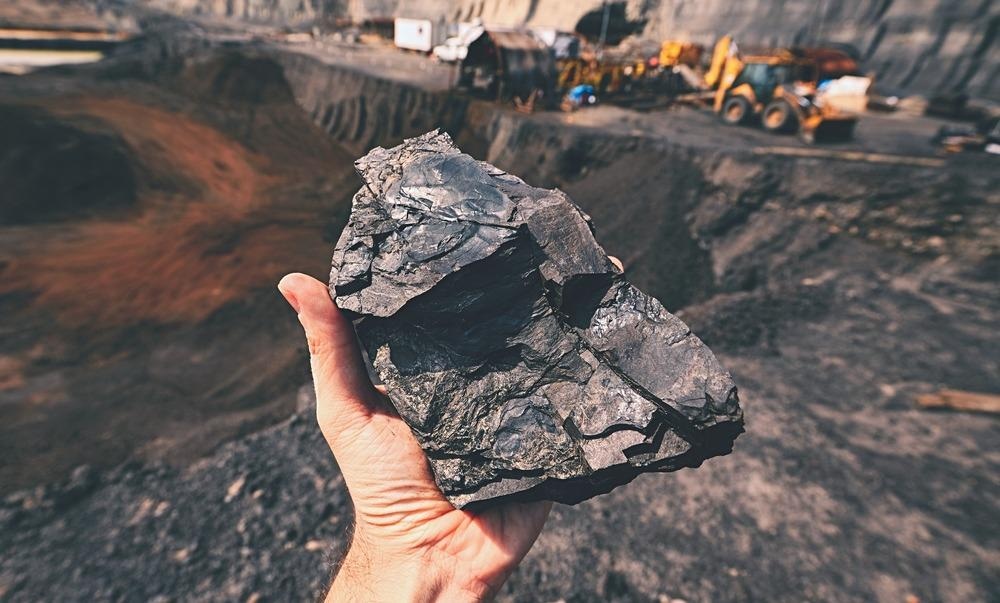Coal is present in an environment where temperature, stress, and other factors act together, particularly in deep high-gas mines. Scientists have revealed that the mechanical behavior of coal is dependent on the combinational effect of these factors. During the last decade, the mining depth has increased greatly. Some of the factors that influence the mining rate are deformation, energy release, and fracture propagation.

Image Credit: Jaromir Chalabala/Shutterstock.com
There is a scarcity of evidence related to the mechanical behavior of coal under varied mining rates. Scientists worldwide are currently working extensively to determine the optimal mining rate for coal and to understand its mechanical behavior. The stress state of coal under the mining condition is a complex issue that affects the loading in the axial direction and unloading in the radial direction. Different mining rates also contribute to the different loading rates for coal mass.
Mining Rates and Mechanical Behavior
Elevating the mining rate on a fully automated caving face can significantly reduce the lower-stress area near the working face. It also decreases the rock failure zone area and effectively increases the peak stress near the working face. These findings show that the mining rate is strongly related to the loading rate. An increase in the mining rate can also reduce the rate of rood subsidence in the roof-control zone on the working face, such that the roof can collapse abruptly.
The effect of mining rate on the working face was investigated using the micro-seismic monitoring method. This method revealed that when the mining rate was slow, the micro-seismic events were widely distributed mainly in front of the working face. On increasing the mining rate, the micro-seismic events were less distributed and concentrated on the coal seam.
The complex environment of the mining process makes the process of evaluation of actual mechanical behavior difficult. The rate of mining typically correlates to the loading rate. Thereby, examining the effects of the loading rates on the strength, energy release, and fracture propagation would help determine the mining rate in-situ.
The tensile strength of the coal is significantly enhanced with the increase in the strain rate. In the case of granite, scientists found that a decrease in the tensile strength occurs with an increase in the static pressure during coupled loading conditions. Scientists conducted dynamic and static cyclic loading and unloading tests and reported that the uniaxial compressive strength (UCS) and Young’s modulus enhanced when the loading frequency increased.
Importance of Critical Value of the Loading Rate
Researchers recently observed the existence of a critical value of the loading rate. They found mechanical behavior of the coal varies substantially with the loading rates on different sides of the critical value.
UCS analysis on coal samples at differential loading rates and confining pressure revealed that the elastic strain energy initially increases and then dips, with the continuous increase in the loading rate.
A UCS test on composite coal-rock mass at various loading rate values was conducted. This experiment showed that as the loading rate increases, an enhancement in the strain of the composite occurs.
In the same study, a gradual increase in the elastic, plastic, and failure phases was also observed and the enhancement in the peak occurred linearly.
Loading rate and strain rate are also linked with permeability, acoustic emission (AE), and physical properties. Some studies revealed that an increase in the loading rate limits the development of AE activity in the coal.
Mechanical Behavior Analyzed in the Laboratory and Actual Mining Site
Scientists have indicated a gap while assessing the mechanical behavior associated with different mining rates in laboratory studies and actual coal mining sites. Therefore, it is important to simulate the engineering-scale mechanical behavior via the simulation of the loading rate. To achieve this feat, scientists recently studied various factors such as macroscopic appearance and the internal essence of rock failure, the elastic strain energy, and crack propagation of coal under various loading rates. Optical monitoring helped determine the surface deformation, crack open propagation, and local strain.
The increase in the loading rate did not enhance the comprehensive strength of the coal linearly. The strength increased until it reached the threshold range of the critical loading rate (vc). When the loading rate was greater than vc, the compressive strength reduced with increasing the loading rate.
Researchers observed that when the loading rate was lower than vc, the tensile strain of the region around the initial joint structure appeared rapidly, while when the loading rate was higher than the vc, discontinuous distribution of the coal matrix occurred.
In the context of surface deformation, loading rates significantly affect surface deformation and crack propagation. Lower values of loading rate generated the final crack propagation, while higher loading rate values produced only a few main cracks on the surfaces of the coal at failure.
Based on mining-induced pressure monitoring and a reasonable mining rate for the Ji15-31030 working face, mining rates were evaluated to be approximately 3 m/d at laboratory conditions. Scientists revealed that although there is a gap between the laboratory observations and actual mining site values, in vitro studies help engineers to predict the in-field conditions.
References and Further Reading
Gao, M. et al. (2021) Mechanical behavior of coal under different mining rates: A case study from laboratory experiments to field testing. International Journal of Mining Science and Technology. 31(5), pp. 825-841. http://dx.doi.org/10.1016/j.ijmst.2021.06.007
Ma, Haifeng. et al. (2021) Mechanical Characteristics of Coal and Rock in Mining under Thermal-Hydraulic-Mechanical Coupling and Dynamic Disaster Control. Mathematical Problems in Engineering. 9991425. pp. 12 . https://doi.org/10.1155/2021/9991425
Huang, P. et al. (2021) Effect of loading rate on mechanical behavior of coal samples with initial damage accumulation. Mechanics of Time-Dependent Materials. https://doi.org/10.1007/s11043-021-09489-x
Disclaimer: The views expressed here are those of the author expressed in their private capacity and do not necessarily represent the views of AZoM.com Limited T/A AZoNetwork the owner and operator of this website. This disclaimer forms part of the Terms and conditions of use of this website.